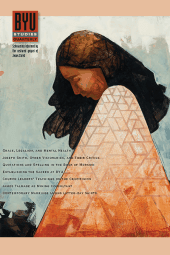Journal
Biblical hesed and Nephite Covenant Culture

Title
Biblical hesed and Nephite Covenant Culture
Publication Type
Journal Article
Year of Publication
2021
Authors
Reynolds, Noel B. (Primary)
Journal
BYU Studies Quarterly
Pagination
143–172
Volume
60
Issue
4
Abstract
This paper explores the possible presence of Old Testament hesed in the Book of Mormon, first by summarizing the most recent findings of Bible scholars regarding biblical hesed and then by sampling the writings of the Nephite prophets to assess the likelihood that they shared the same Old Testament concept. It recognizes the importance of approaching this question through an analysis of the standard expectations for individual conduct both of God and of his people in the moral culture of covenant societies that is termed hesed in the Old Testament. It is impressive that the family of terms that Bible translators have proposed as English equivalents for Hebrew hesed also predominate in the language of the Nephites in their descriptions of God’s character and relationship with his people—as well as God’s expectations of their conduct toward him and toward one another. The Lord is the loving father and the merciful king of his covenant people. They are his sons and daughters by covenant. And if they continue faithful, he will deliver them from death and hell, and they will be seated eternally in heaven, pure and spotless, with the ancient covenant fathers—Abraham, Isaac, and Jacob.
This paper follows the insights of Nelson Glueck, Frank Moore Cross, and others that the language of hesed in the Hebrew Bible is borrowed from the prelegal cultures of desert tribes in the ancient Near East that incorporated their own deities into their kinship-based social structures. The Israelites had adapted that language to the religion of Yahweh and his covenant with Abraham and subsequently with the people of Israel. While this paper does not deal with the additional adaptations scholars find in the Mosaic covenant, the Davidic covenant, or in the New Testament, it does explore the text of the Book of Mormon, which explains its own preexilic origins, and finds that it strongly reflects the cultural values of ancient Israelite hesed—while further adapting the Israelite language of covenant to the revelation of Jesus Christ and his gospel as given to the earliest Nephite prophets and preached by their successors over the next thousand years.
Subject Keywords
Bibliographic Citation
Terms of use
Items in the BMC Archive are made publicly available for non-commercial, private use. Inclusion within the BMC Archive does not imply endorsement. Items do not represent the official views of The Church of Jesus Christ of Latter-day Saints or of Book of Mormon Central.